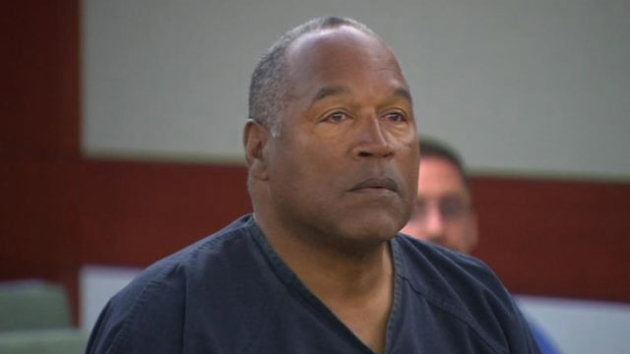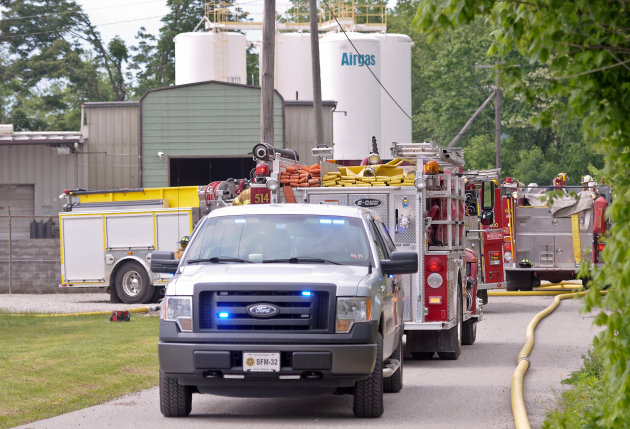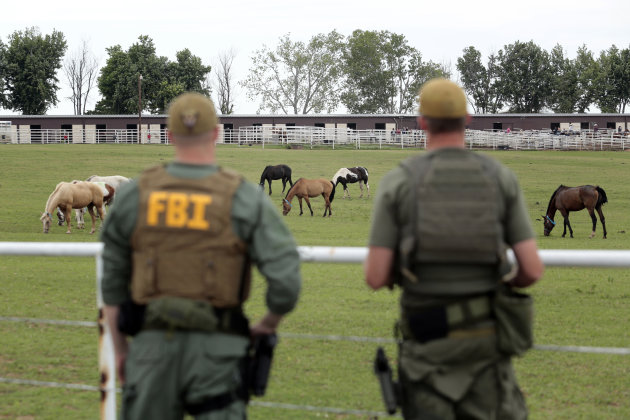Police ID suspect in New Orleans mass shooting Police late Monday identified a 19-year-old man as a suspect in the shooting of about 20 people during a Mother's Day parade in New Orleans, saying several people had identified him as the gunman captured by surveillance camera videos.
Police late Monday identified a 19-year-old man as a suspect in the shooting of about 20 people during a Mother's Day parade in New Orleans, saying several people had identified him as the gunman captured by surveillance camera videos.
Superintendent Ronal Serpas said officers were looking for Akein Scott of New Orleans. He said it was too early to say whether he was the only shooter.
"We would like to remind the community and Akein Scott that the time has come for him to turn himself in," Serpas said at a news conference outside of police headquarters.
A photo of Scott hung from a podium in front of the police chief. "We know more about you than you think we know," he said.
The mass shooting showed again how far the city has to go to shake a
persistent culture of violence that belies the city's festive image.
Earlier, police announced a $10,000 reward and released blurry
surveillance camera images, which led to several tips from the
community.
"The people today chose to be on the side of the young innocent
children who were shot and not on the side of a coward who shot into the
crowd," Serpas said.
The superintendent said SWAT team members and U.S. marshals served a
searched warrant at one location looking for Scott, but didn't locate
him.
He vowed that police would be "looking for Akein Scott for the rest
of the night and tomorrow... and I would strongly recommend that Akeim
turn himself in."
Angry residents said gun violence — which has flared at two other
city celebrations this year — goes hand-in-hand with the city's other
deeply rooted problems such as poverty and urban blight. The
investigators tasked with solving Sunday's shooting work within an
agency that's had its own troubles rebounding from years of corruption
while trying to halt violent crime.
"The old people are scared to walk the streets. The children can't
even play outside," Ronald Lewis, 61, said Monday as he sat on the front
stoop of his house, about a half block from the shooting site. His
window sill has a hole from a bullet that hit it last year. Across the
street sits a house marked by bullets that he said were fired two weeks
ago.
"The youngsters are doing all this," said Jones, who was away from home when the latest shooting broke out.
Video released early Monday shows a crowd gathered for a boisterous
second-line parade suddenly scattering in all directions, with some
falling to the ground. They appear to be running from a man in a white
T-shirt and dark pants who turns and runs out of the picture.
Police were working to determine whether there was more than one
gunman, though they initially said three people were spotted fleeing
from the scene. Whoever was responsible escaped despite the presence of
officers who were interspersed through the crowd as part of routine
precautions for such an event.
Police said in a news release Scott has previously been arrested for
illegal carrying of a weapon, illegal possession of a stolen firearm,
resisting an officer, contraband to jail, illegal carrying of a weapon
while in possession of a controlled dangerous substance and possession
of heroin.
It was not immediately clear whether he had been convicted on any of those charges.
"Akeim is no stranger to the criminal justice system," Serpas said.
Serpas said that ballistic evidence gathered at the scene was giving them "very good leads to work on."
Witness Jarrat Pytell said he was walking with friends near the parade route when the crowd suddenly began to break up.
"I saw the guy on the corner, his arm extended, firing into the crowd," said Pytell, a medical student.
"He was obviously pointing in a specific direction; he wasn't swinging the gun wildly," Pytell said.
Pytell said he tended to one woman with a severe arm fracture — he
wasn't sure if it was from a bullet or a fall — and to others including
an apparent shooting victim who was bleeding badly.
Three gunshot victims remained in critical condition Monday, though
their wounds didn't appear to be life-threatening. Most of the wounded
had been released from the hospital.
It's not the first time gunfire has shattered a festive mood in the
city this year. Five people were wounded in a drive-by shooting in
January after a Martin Luther King Jr. Day parade, and four were wounded
in a shooting after an argument in the French Quarter in the days
leading up to Mardi Gras. Two teens were arrested in connection with the
MLK Day shootings; three men were arrested and charged in the Mardi
Gras shootings.
The shootings are bloody reminders of the persistence of violence in the city, despite some recent progress.
Last week, law enforcement officials touted the indictment of 15
people in gang-related crimes, including the death of a 5-year-old girl
killed by stray gunfire at a birthday party a year ago.
The city's 193 homicides in 2012 are seven fewer than the previous
year, while the first three months of 2013 represented an even slower
pace of killing.
On Monday night, 100 to 150 people gathered for a unity rally and
peace vigil in the wake of Sunday's shootings. Some residents stood in
their doorways or on their steps. At one point, trumpeter Kenneth Terry
played, "O For a Closer Walk With Thee."
Robin Bevins, president of the ladies group of the Original Four
Social Aid and Pleasure Club, said she and members of her organization
came to the rally to show solidarity.
"This code of silence has to end," said Bevins, who's also a member
of the city's Social Aid Task Force. "If we stand up and speak out,
maybe this kind of thing will stop."
Amy Storper, who lives in a neighborhood near where the shooting happened, brought her 7-year-old son William to the rally.
"I felt the need to come out and show my support, to let people in
this neighborhood know that people care," she said. "Perhaps if the
whole city showed up, all 300,000, then maybe we can make a difference."
Mayor Mitch Landrieu walked into the area, greeting people, shaking hands and stopping to talk with some residents before addressing the crowd.
"We came back out here as a community to stand on what we call sacred
ground," Landrieu said. "We came here to reclaim this spot. This
shooting doesn't reflect who we are as a community or what we're about."
Leading efforts to lower the homicide rate is a police force that's
faced its own internal problems and staffing issues. At about 1,200
members, the department is 300 short of its peak level.
Serpas, the chief since 2010, has been working to overcome the
effects of decades of scandal and community mistrust arising from what
the U.S. Justice Department says has been questionable use of force and
biased policing. Landrieu and Serpas have instituted numerous reforms,
but the city is at odds with the Justice Department over the cost and
scope of more extensive changes.
Landrieu's administration
initially agreed to a reform plan expected to cost tens of millions over
the next several years. But Landrieu says he wants out now because
Justice lawyers entered a separate agreement with Orleans Parish Sheriff Marlin Gusman over the violent and unsanitary New Orleans jail — funded by the city but operated by Gusman.
The site of the Sunday shooting — about 1.5 miles from the heart of
the French Quarter — showcases other problems facing the city. Stubborn
poverty and blight are evident in the area of middle-class and
low-income homes. Like other areas hit hard by Hurricane Katrina in
2005, the area has been slower to repopulate than wealthier areas. And
Landrieu's stepped up efforts to demolish or renovate blighted
properties — a pre-Katrina problem made worse by the storm — remain too
slow for some.
Frank Jones, 71, whose house is a few doors down from the shooting
site, said the house across from him has been abandoned since Katrina.
Squatters and drug dealers sometimes take shelter there, he said.
A city code inspector, who declined to be interviewed, was there Monday
"It's too late," Jones said. "Should have fixed it from the very beginning. A lot of people are getting fed up with the system."

 Police late Monday identified a 19-year-old man as a suspect in the shooting of about 20 people during a Mother's Day parade in
Police late Monday identified a 19-year-old man as a suspect in the shooting of about 20 people during a Mother's Day parade in 

























